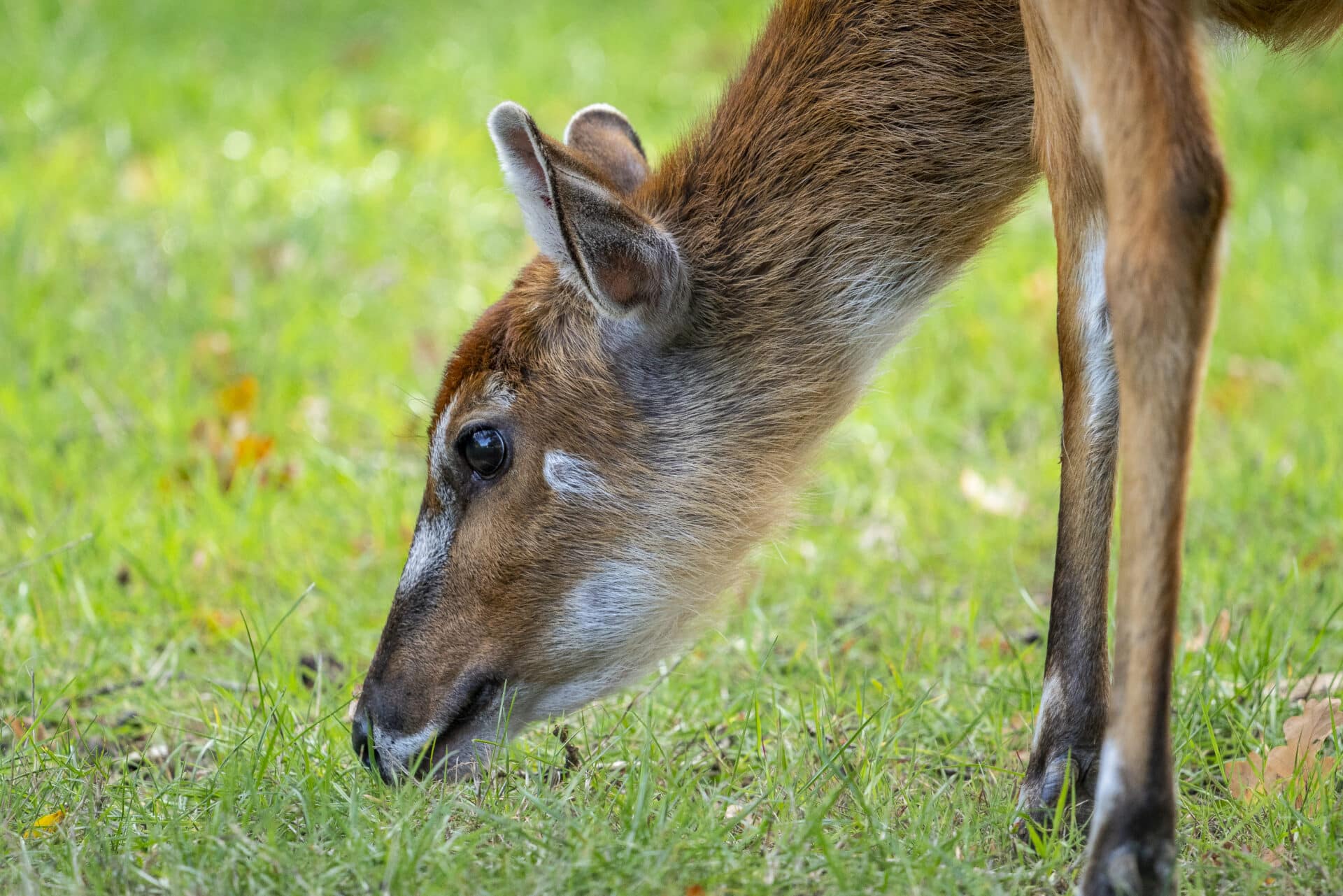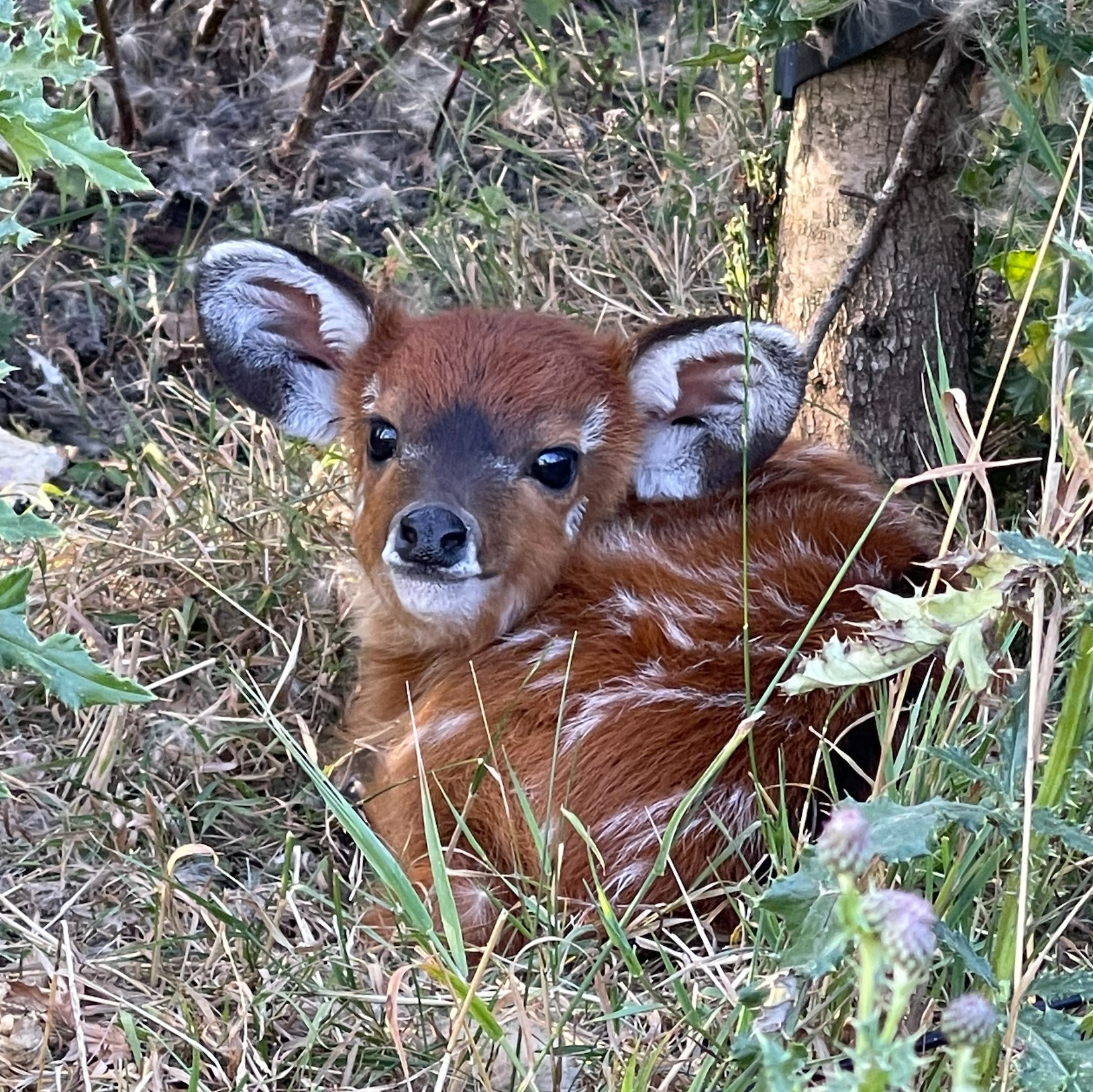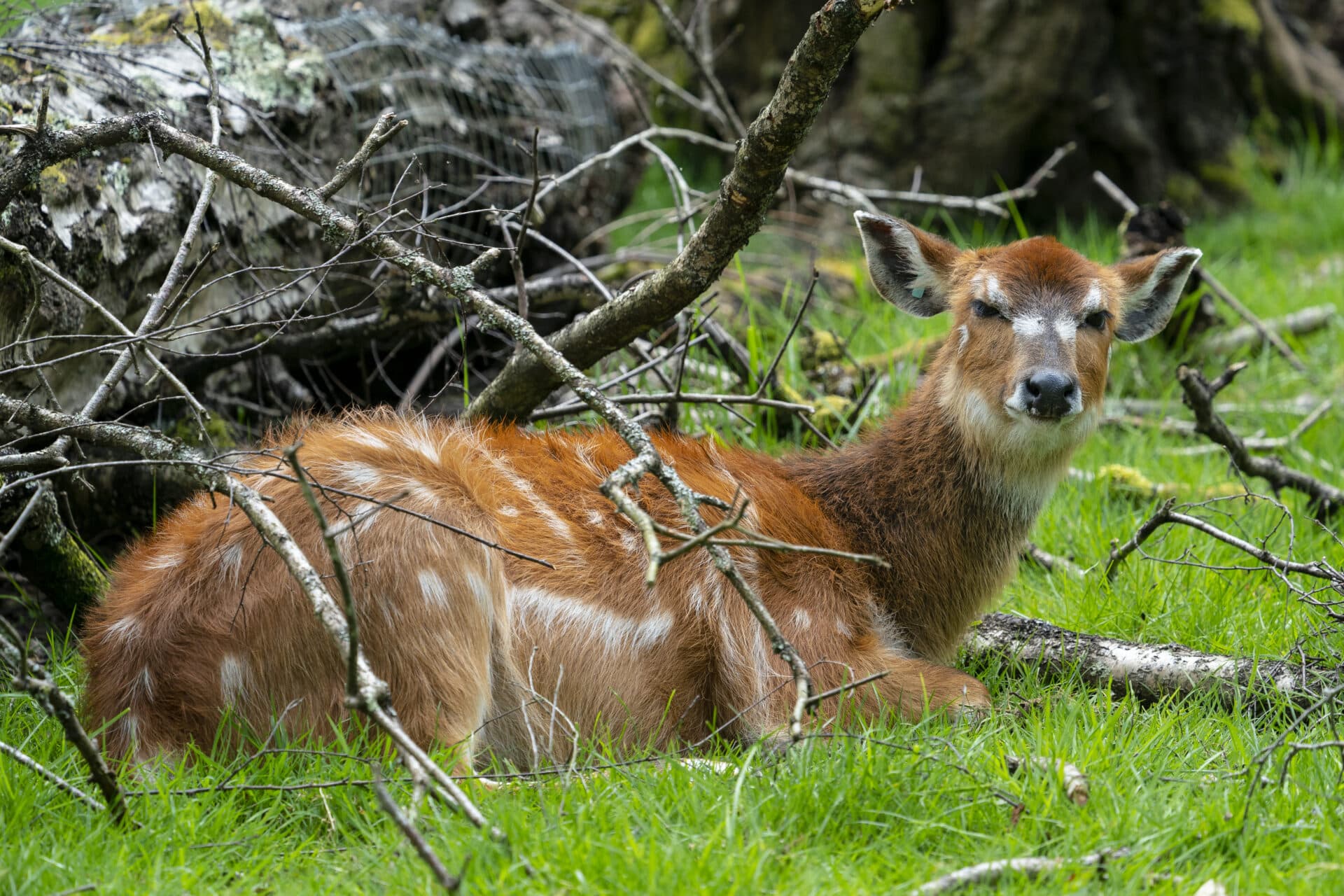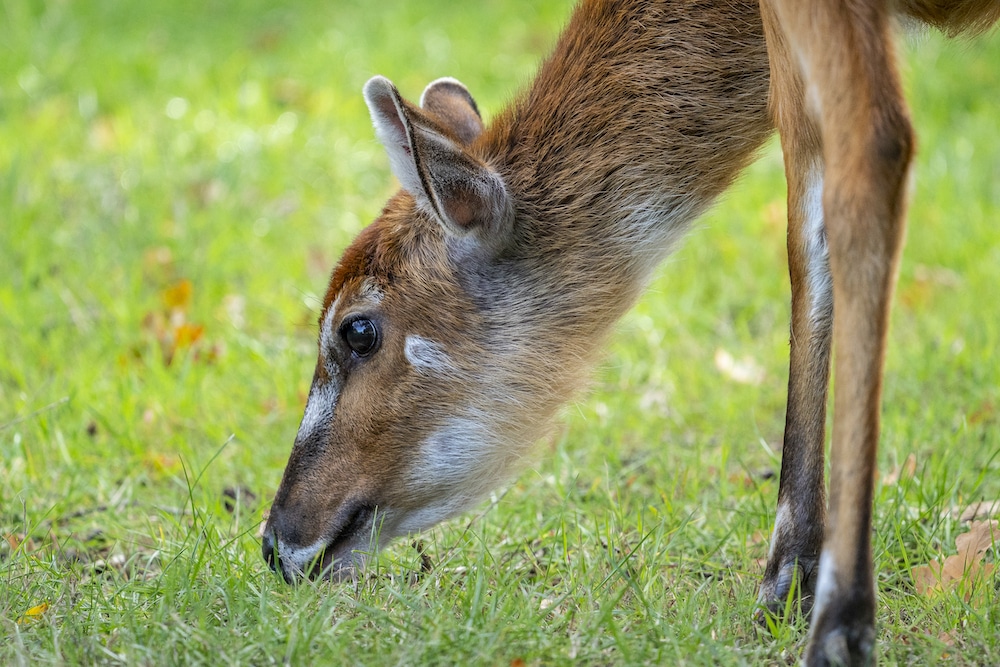Sitatunga
Common Name: Sitatunga
Scientific Name: Tragelaphus spekii
Sitatunga are highly adapted for life in a swampy habitat with their flexible foot joints and banana-shaped hooves. Each of their hooves have two elongated, widely splayed toes which allows them to move almost silently through water and traverse boggy ground without sinking in the mud. They are good swimmers and are able to paddle several miles.
Females and males look very different. Females are smaller, with a chestnut-coloured coat. Males are not only darker in colour but they also have spiralled horns. These point backwards in a lyre shape, making it easier to navigate through dense vegetation.
Sitatunga look very fluffy as their coats have a wool-like appearance. Their fur is water-repellent which helps keep them dry in their wetland habitat. In the wild, they have been seen standing, ruminating mid-river and will even submerge completely to avoid predation.
Fast Facts
-
Status
Least concern
-
Size
Head-body:
males 136–177 cm, females 104–146 cm; shoulder height:
males 81–116 cm, females 72–90 cm -
Gestation
7 to 8 months
-
Young
1
-
Lifespan
20 years
In the wild
Sitatunga are herbivores with most of their diet being made up of water plants such papyrus and reed shoots. They will also eat land-based vegetation including flowers, buds, grasses and browse (leaves, twigs and branches). They have been known to consume elephant dung to access nutritious undigested seeds.
Also known as the marshbuck, sitatunga are found across lowland forest and swampy wetland areas of Central, Southern and Eastern Africa. Once found across a larger range in Western Arica, there are now only localised populations in Senegal, Gambia, Guinea and Guinea-Bissau. Sitatunga prefer areas of dense vegetation including marshy clearings in forests, thicketed riverbanks and mangrove swamps. They are primarily active in the hours around dawn and dusk.
Sitatunga are usually solitary animals but during the breeding season they will pair up or form small mixed groups. The gestation for a sitatunga is 7.5 months. The mother will trample a mat in a dry area of the swamp where the calf will be born and remain for up to a month, with the mother returning for short periods to allow the calf to suckle. Calves are independent from between 4 – 6 months but it is not unusual to find a young sitatunga following and foraging alongside its mother well beyond this.
Sitatunga are preyed upon by lions, wild dogs, crocodiles and leopards. They are relatively easy to catch on dry land as their aquatic hooves make running difficult. Where possible sitatunga will use water as a means of escape and will even submerge completely in order to avoid predation. In certain areas sitatunga are also sustainably trophy hunted, which is economically important to some local areas.
Due to its reliance on wetlands, sitatunga are vulnerable to environmental change. A global rise in water levels changes the availability of vegetation and causes them to move inland, which increases the risk of predation by other animals and by humans, where their increased accessibility leaves them vulnerable to illegal hunting for bush meat and skins. Despite this, sitatunga continue to do well within their environment so there are currently no species-specific conservation actions in place.



